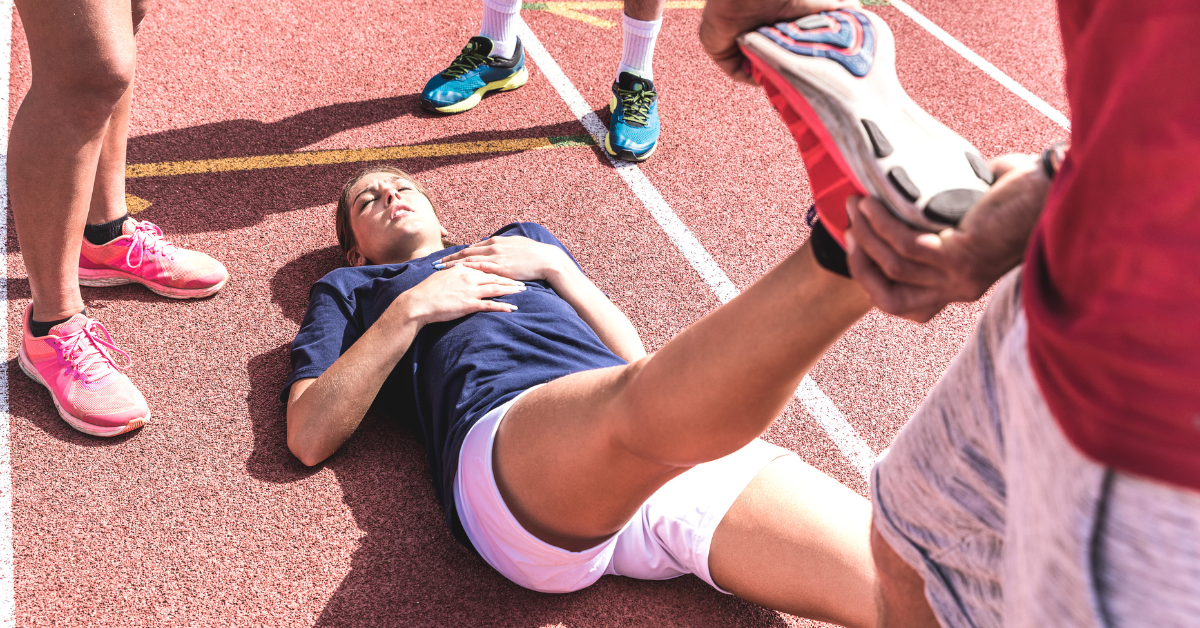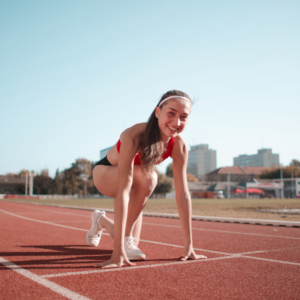
March is National Athletic Training Month, and PT Northwest is dedicated to helping you get back in the game!
Whether it’s a sprained ankle or a torn ligament in the knee, a comprehensive rehabilitation team is crucial to expedite your return to the field. At PT Northwest, our certified athletic trainers and physical therapists go beyond just taping ankles and providing immediate injury treatment. Ensuring your injury heals properly is our top priority, our staff employs proven techniques, including manual therapy, therapeutic exercises, and functional drills.
What sets PT Northwest apart from other Athletic Trainers?
We recently sat down with Kayla Smith, ATC to learn more about the Athletic Training program at PT Northwest.
JB: Hey Kayla. Thanks for sitting down to chat with me more about your Athletic Training program. First off, how did you become involved with the program?
KS: After completing graduate school in the Midwest, I was looking to return to the PNW. My older brother had actually been working for PTNW for 2 years and had nothing but great things to say about their program. I applied for and accepted a position in 2017. I started at a high school, transitioned to Willamette University in 2018, and joined the leadership team in 2021.
JB: What sets the athletic training program at PTNW apart from other athletic training programs?
KS: I believe the partnership between the ATCs and PTs, as well as the collaboration within the ATCs sets us apart from other programs. Being a part of a PT company, we have direct access to patient outcomes and charts, as well as direct communication with the PTs working with our athletes. This allows us to track their rehabilitation status, provide guidance on their rehab in the athletic training room, communicate with coaches and necessary parties effectively, and frequently have conversations with the PTs to provide the most comprehensive and effective treatment to our patients. Aside from the partnership with PT, our ATC program is connected to multiple organizations throughout the area including the Corvallis Knights, Capital Futbol Club, Western Oregon University, Oregon State University, Willamette University, Salem Health, and the City of Salem. We work closely together to meet the needs of our community. These opportunities not only allow us to connect with multiple professionals and athletes throughout the PNW, but it allows our ATCs to gain a wide variety of experiences. Lastly, our ATC program also assists with screenings in the industrial setting via POET’S (Post-Offer Employment Screening) and FCE’s (Functional Capacity Evaluation).
 JB: How do you tailor training programs to meet the individual needs and goals of athletes?
JB: How do you tailor training programs to meet the individual needs and goals of athletes?
KS: Every athlete is different and needs to be treated so. Every time we evaluate athletes, we gain an understanding of their goals (for life, and sport). We also perform a functional screening to assess body mechanics and have a conversation with the athlete about the “bigger picture” so that we can address the root cause and not just symptoms. On top of that, each athlete has a role/position on the team. This will also lead us to create specific exercises and return to play precautions to return the athlete safely to their sport.
JB: Can you describe a typical day in the life of an athlete participating in the program?
KS: ATCs have flexibility in their hours depending on the site they are located. At the high schools, we will show up prior to school ending and will stay until treatments/evaluations are completed following the end of practices. At the collegiate level, ATCs may have set hours (11am-7pm open training room hours) or will be assigned to a specific team and will work their hours around those assigned teams. The athletes can check in prior to their sport for evaluation/rehab/tapings, then the ATC is typically on the field for any emergency management or evaluation during practice. The athletes typically have access to not only rehabilitation and treatments but may utilize the ATC for preventative measures.
“I found that the benefit of the ATC being in both places was that I was able to work with this athlete every day on top of his PT appointments.”
JB: Can you share some success stories or notable achievements of athletes who have gone through the athletic training program at PTNW?
KS: I can think back to my first year with PTNW when I was working at the high school as well as the PT clinic on a regular basis. I had a football athlete (senior) who tore his ACL, MCL, and Meniscus during the season. We were able to get him in quickly with orthopedics for imaging, and to schedule surgery. Then promptly plugged him in for PT pre-operative as well as post-operative. I found that the benefit of the ATC being in both places was that I was able to work with this athlete every day on top of his PT appointments. Not only did that allow them to perform consistent rehabilitation, but it allowed me to form a personal connection with the athlete and parents, as well as bridge the gap in communication between ATC’s and PT’s. This athlete had the ability to work with multiple medical professionals with varying knowledge and skill sets which the athlete shared was a very positive experience. This athlete was able to achieve his goals and went on to play football at Western Oregon University for 4 years.
JB: How do you collaborate with other healthcare professionals to ensure comprehensive care for athletes?
KS: It is critical to build relationships within the community with other healthcare professionals. We typically reach out to meet local professionals and schedule meetings to discuss smooth transitions to and from ATCs to the other healthcare professionals. In the past few years, I have seen it beneficial to have a secure email connection as well as making phone calls and having face to face meetings to coordinate the care of our athletes. Close collaboration allows for the athlete’s rehabilitation to move quicker (not waiting for documentation from a second party) and smoother since we are then able to provide the most comprehensive care with common goals.
JB: How do you stay updated on the latest advancements in sports medicine and athletic training techniques?
KS: ATCs are required to follow BOC requirements and stay up to date with continuing education units each year. We do this via conferences (local and global), online learning webinars, and hands on courses. Through these CEUs, we are required to also complete a certain number of research-based courses. This ensures that we are following the best practices and implementing updated strategies for prevention and care of our athletes.
JB: Can you share some insights into the supportive community and environment that athletes experience at PTNW?
KS: The staff within PTNW has always felt more like a family than just a group of coworkers. Everyone I’ve worked with seems to have a common mindset that helping the patient comes first, and collaboration is key to effectively treating our patients. From what I’ve witnessed, the athletes feel comfortable sharing their true emotions throughout their injury process because they know they will be supported and cared for. I’ve had multiple athletes shed tears (happy or sad) because they know that rather than receiving judgement, they will be treated with respect. By listening to our patients, we can set realistic goals, and motivate our athletes so that they may be successful.
JB: What advice would you give to aspiring athletes or coaches looking to join the program?
KS: I have nothing but positive encouragement for others to participate in our program. We would love to communicate with new athletes, coaches, and programs to continue providing care within the community as well as to expand our own knowledge and skill sets.
JB: What are the most common sports injuries you see or treat?
KS: We see a wide variety of injuries in sports ranging from shin splints to complex fractures. I would say the most common injuries I’ve seen over the years are ACL/MCL/Meniscus tears, shin splints, and concussions. However, what I am seeing more and more over time that healthcare is beginning to address, is the mental aspect and layers that accompany even these common injuries. It seems increasingly more common that ATCs will identify mental hurdles associated with their injury and collaborate with other healthcare providers so that we may treat the athlete holistically. Our treatments will include exercises, manual treatments, goal setting and education (not only on their injury and throughout the rehab process, but the importance of continued preventative care after).
Ready to partner with PT Northwest?
The trust we’ve built extends to local teams and professional athletes, making us the official sports therapy and rehab provider for esteemed organizations such as the Salem-Keizer Volcanoes (Single-A affiliate for the San Francisco Giants), the Corvallis Knights of the West Coast Baseball League, and Willamette University. Our track record includes serving notable athletes like former NFL tight end Kevin Boss and Major League Baseball pitcher Kevin Gregg. Click here to learn more about our Athletic Training program, and know we strive to keep athletes in top form and back in the game.
